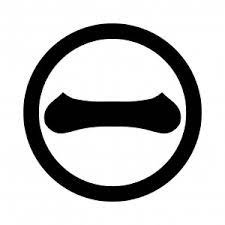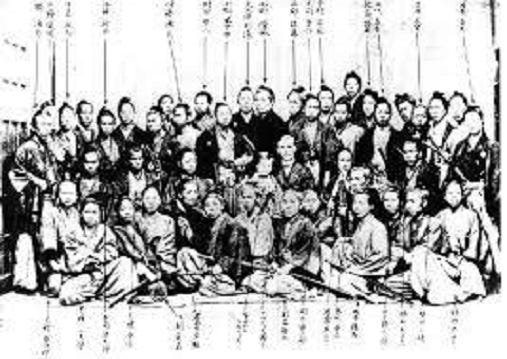Shinsengumi Captain, Harada Sanosuke, (1840- 1868)
The Samurai who survived seppuku, and made it his symbol.
Harada Sanosuke was born in in 1840 in Matsuyama, (Ehime Prefecture) to a low ranking samurai serving the retainers of the Tokugawa Matsudaira clan.
Despite having trained hard and becoming an adept in the famed Hozoin-Ryu spear disciplines, his lowly status led to him once being ridiculed as being ignorant of the way of the samurai. In an effort to prove his tormentor wrong, he stripped off his upper garments and proceeded to show that he knew the correct way to commit seppuku, however the cut was shallow enough not to have caused any internal damage, and as a kaishaku-nin (second) had not been properly organized for the sudden attempt, Harada survived.
Years later, the scar across his abdomen would be a source of pride. It would also serve to inspire his new family crest, a circle with a horizontal line through it.
Leaving Matsuyama, Harada went to Edo and trained at Kondo Isami’s sword school, and followed Kondo into the pro-Tokugawa Roushigumi, or “Defenders of Kyoto, before dissent led to the formation of the Shinsegumi.
Harada was much trusted by the leaders of the Shinsengumi, Serizawa Kamo and Kondo Isami and was often chosen for its many missions, including, most likely, the assassinations of Serizawa Kamo, Uchiyama Hikojiro, and was possibly involved in that of Sakamoto Ryoma too. Harada was most probably involved in the Ikedaya Affair, and in the extermination of the rival Kodaiji faction. As a member of the Shinsengumi, Harada fought in the Boshin War between Imperial and pro-Tokugawa forces in the January 1868 Battle of Toba-Fushimi on the outskirts of Kyoto, and upon returning to Edo, the ill fated Battle of Koshu-Katsunuma in March of 1868.
Following this defeat, the Shinsengumi faced internal problems, with, according to versions of the story, Kondo demanding the surviving Shinsengumi members become his direct retainers. Harada and other members then left the Shinsengumi, and together with a band of Tokugawa retainers, formed the Seiheitai unit, which headed north to Aizu in search of action.
Harada returned to Edo not long after to be with his wife and son, and joined the pro-Tokugawa Shogitai at the Battle of Ueno. Badly wounded by gunfire, he died two days later at the Edo residence of a fellow samurai. He was 28 years old. As a man, Harada is mostly forgotten or unknown to the majority of Japanese today, however as a samurai who saw first-hand the violent changes at the end of the samurai period, he remains an important piece in the jigsaw of the late Edo period.





